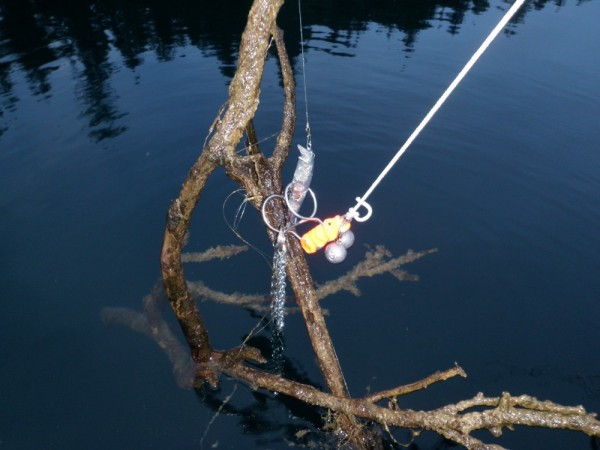
My Hound Dog retriever getting a workout!
Click to view image
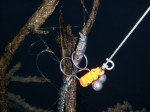
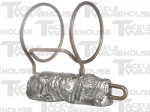
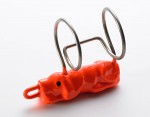
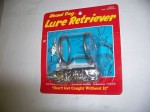
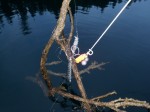
Of all the “fishing stuff” I possess (and I do have a lot), this lure retriever ranks right up there at the top of the list for productive tools right after rods and reels. I purchased my first one about 10 years ago and had it for many years before losing it when it hung up on something I couldn’t lift. I actually had to tie it off to the rear boat cleat and drive off on the big motor to bust the 150 Lb. nylon cord it was attached to. I immediately bought another one the next week......I don’t go fishing without them if I am fishing at any depth at all. Even if I go out in someone else's boat, I will bring mine along if they don’t have one.
I have gotten better with using it over the years and would honestly say I have probably retrieved over 200 lures in the last five years. There are days when I get 100% of the lures I try for. I probably get about 80% on average. The secret is staying patient and don’t give up too soon. It is definitely a “feel” proposition when using it. I will get into that later.
I like to modify them, though they will work well right out of the package. I used mine for many years in a stock format. The more I thought about it, I decided to add 6” chain lengths to get tangled in the hooks.....that was a huge adjustment that probably increased my success by 100%. I simply went to my local “Ace Hardware” and bought either 3/4 or 1” split rings and then added 6 in. chain lengths that I had them cut for me. The chains are added to the rings which are added to the lower loop of stainless steel hardware that comes out of the bottom of the lead body of the dog (check out the photos of mine in use). As you slide the retriever up and down against the snagged lure, you usually get a loop or two caught in one of the trebles and can now start pulling the lure and whatever it is caught on up from the bottom. You want to alternate between loading the rod and line tight and then giving some slack until you can either knock the lure off the snag or get a hook caught in the chains. Just this year I added (2) one ounce round weights and attached them to a large split ring and placed it at the top of the retriever to add weight to the whole retriever. It helps to get it down quicker and may help it penetrate some branches you encounter on trees or brush to access the snagged lure.
I like to use a regular yellow or orange marker buoy that bass guys have used for years to mark the structure or spot they are fishing. I load up with 100 feet of 150 Lb. nylon cord and that much will over fill the buoy a little bit. I used to only run 50 feet but as I got caught with riggers at depths greater than that I couldn’t reach some of the snags. That is when I decided to go with more line. I have retrieved lures as deep as 70 feet.
The two main obstructions I get caught in are wood in the form of sunken trees or stumps that are still attached to the bottom like we see at Wickiup Reservoir here in Central Oregon. Some lakes were formed with standing trees still in them. Anchor ropes are another one we see a lot. You can usually tell the ropes as they will give a bit after you are into them. I have a large collection of anchors in my shop that I have accumulated over the years. I don’t anchor much so I give many away to friends that like to use them for kokanee jigging. Just this year, I pulled up a tree that was longer than my boat ( 18 feet) and had a trunk around 10-12 in. in diameter. I could barely hang onto it and bet it weighed over 75 LB. dry weight if it would have been out of the water. After we got it up to the surface, we towed it into the shallows where it would be out of the trolling lanes.
The biggest problem you will encounter is the wind. A light breeze is not too difficult but anything over 10 mph could be tough. If you want to try with some wind, you need to back your boat up to the snag with the stern facing into the wind. If you have a bow mount electric trolling motor you could easily attack the snag from that angle....I don’t. I have remote steering on my kicker so I can steer and use the motor at low rpm to stay near the snag ( the wind will blow you off it). It really helps if you have another person help you with or without wind. A word of caution: you can end up with a mess while in reverse and trying to stay on the snag in the wind. You might get the fishing line or worse yet, retriever line in the prop which can be a mess and possibly finish up your day on the water. I suggest you start out using it under calm conditions to start with and practice that drill to begin with. You always want to get directly vertically over the snag to have the best luck.
The good news is that they are relatively cheap to buy ( $10 or less) and many tackle stores carry them. I buy a lot of gear from www.tacklewarehouse.com and you can go on line to order from them. I think they are manufactured by K&G Enterprises so check with www.kgenterprise.com for another source.
If your fishing techniques subject you to more snags that you would like to see, I suggest you seriously think about purchasing one of these retrievers. They will pay for themselves really quickly once you learn how to use it!
I am not compensated in any way for this review.
Screamin’ Drags,
Rick

